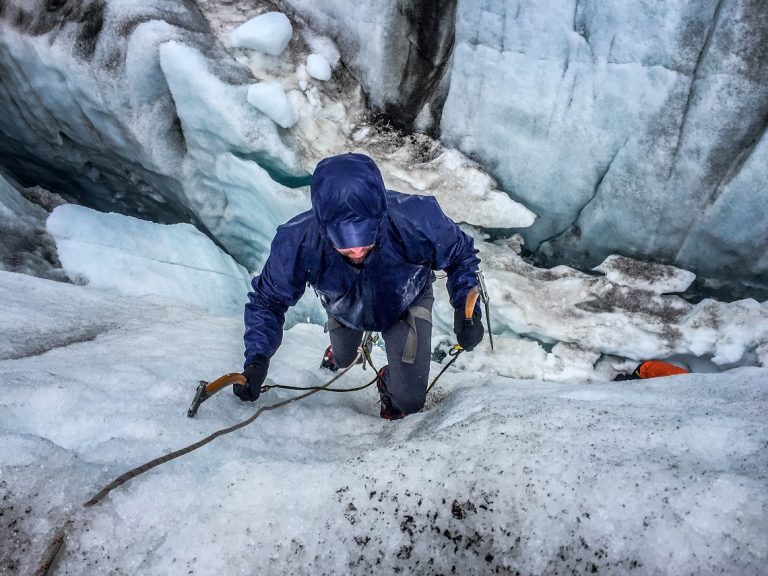ROUGH DIAMOND
In a landscape of SUPERLATIVES, there’s a DAZZLING prize worth pursuing above all others: Iceland’s VATNAJÖKULL Glacier… and it’s there to be CLIMBED.
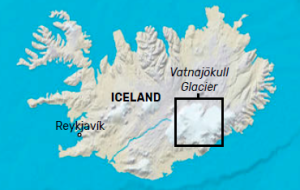 Precariously perched high above the Land of Fire and Ice, crampons and ice tools providing much-needed purchase, I could see far beyond the moraine below to where the glacial geology gave way to alluvial plains. Eons of glacial erosion led to this deposition of rich, volcanic soil, carried in the melted runoff.
Precariously perched high above the Land of Fire and Ice, crampons and ice tools providing much-needed purchase, I could see far beyond the moraine below to where the glacial geology gave way to alluvial plains. Eons of glacial erosion led to this deposition of rich, volcanic soil, carried in the melted runoff.
The resultant kaleidoscope of vibrant greens and yellows, contrasting against the black soil, was proof that life is possible even in the far northern latitudes where the environment is less than hospitable most of the year.
FIRE AND ICE
The very fact that we were standing on Europe’s largest sub-arctic glacier had never been part of the plan. We were on a Kerouacian journey, travelling from Iceland’s Snæfellsnes Peninsula to the island’s Southeastern shores in search of Fjallsárlón Iceberg Lagoon. Nearing our destination, we set eyes on the glacier’s headwall and its hulking mass of rising ice. In that initial instant, we felt compelled to explore this primordial block of ice.
On our journey, we spotted humpback whales hunting along fjords with postcard-worthy backdrops. We walked barefoot along black sand beaches and climbed basalt sea stacks that could have been plucked from the cover of a Led Zeppelin album (you know the one). Along the way, we saw waterfalls of all sizes. From a small trickling cascade to massive, rushing deluges, each was more picturesque than the last. But, of all the sights Iceland had bestowed, the towering ice of Vatnajökull Glacier was unmatched in its magnificence.
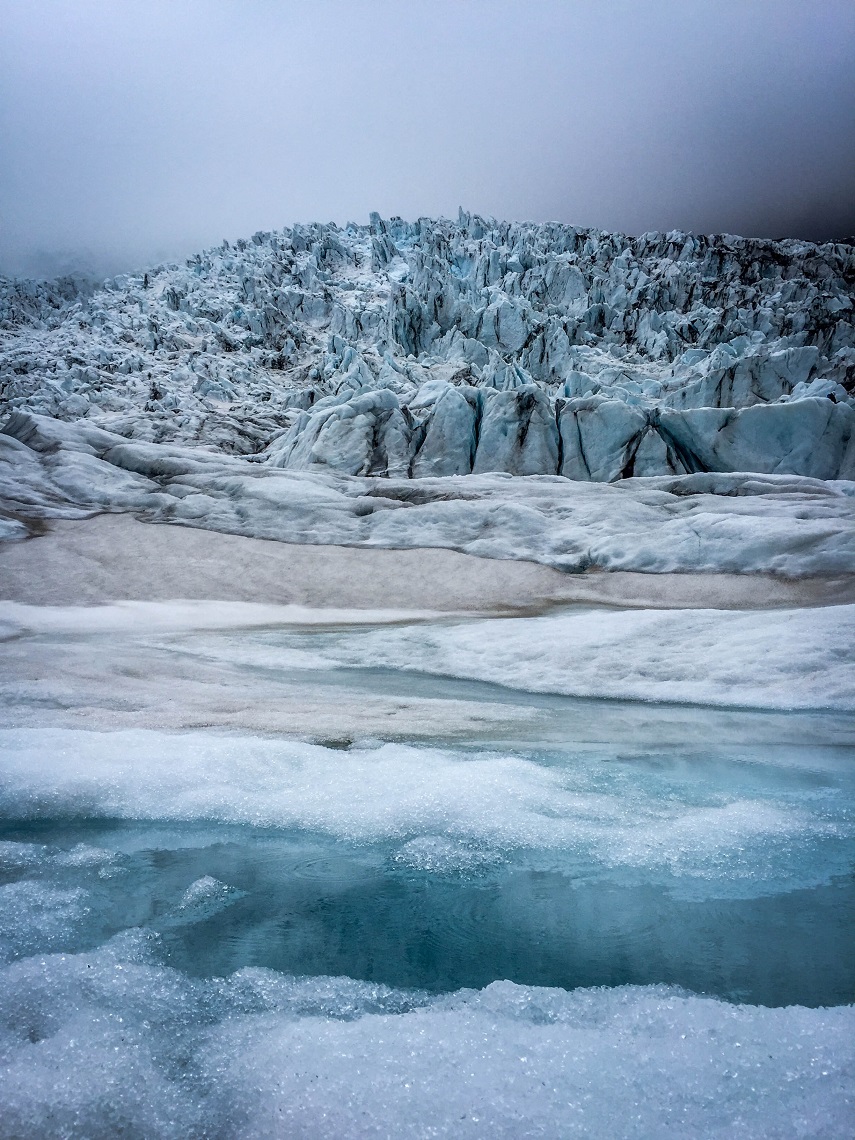
The absolute enormity of the glacier is on a scale unparalleled elsewhere on this island nation. Vatnajökull Glacier — and its roughly 30 named outlet glaciers — are located within a National Park of the same name and cover 14 percent of Iceland’s landmass. Situated within the boundaries of Vatnajökull National Park also rests Iceland’s tallest peak, Hvannadalshnúkur. Standing at 2,110m, Hvannadalshnúkur’s pyramidal summit marks the highest point of Iceland’s largest active volcano, Öræfajökull. In fact, the Park and the outlet glaciers therein rest on several volcanos, and activity has been recorded in the area as recently as 2011.
Shaped by geothermal activity, Iceland was born from fire. The vast landscape surrounding the glacier is covered in evidence of volcanic activity, both recent and ancient. Hot springs and geothermal vents are ubiquitous in Iceland and hard to miss as you travel across the island. Actually, the area owes its name to the geothermal activity rising from underneath the ice.
Literally translated, Vatnajökull means Lake Glacier, and was named for the lake that has formed under the central aspect of the ice cap. In a country of extremes, Vatnajökull National Park stands out for its beauty and ruggedness. While fire shaped the island, it was the ice we were chasing, and nothing is more representative of Iceland than the glacier we’d set our sights on climbing.
A COOL PLAN
I would be remiss if I didn’t stress that hiring a guide is essential unless you are a well-seasoned mountaineer with training and experience specific to glacial travel. There is inherent risk to any activity in the backcountry and travelling across or climbing glaciers is no exception. Guide services are abundant in the area, and in most cases, it’s possible to book one within 24 hours.
Since we’d not planned to climb on a glacier nor brought the gear to do so, we got ourselves a guide for the day, who also provided us with kit. We chose to secure the services of an outfitter out of the Skaftafell area due to the region’s proximity to Iceland’s major highway, Route 1, as well as the views afforded of Hvannadalshnúkur peak. There are other areas to explore, and if you bring the required kit and have the necessary skill set, you will be a step ahead.
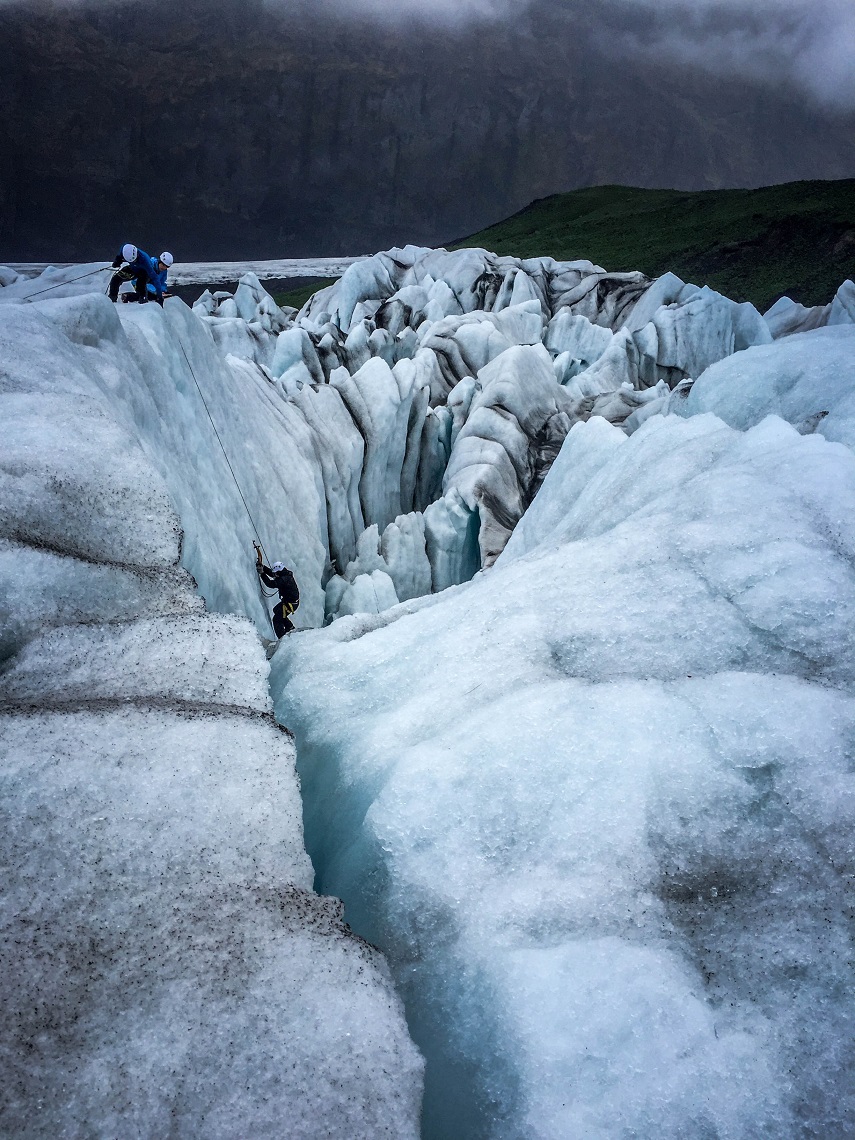
The scenery in Iceland is some of the most picturesque this planet has to offer, and you will likely find yourself making frequent stops to take photographs along the way. If time is in short supply the direct drive from Reykjavic to Vatnajökull National Park is 4-5 hours by rental car, or if travelling by public bus, plan on over 7 hours. With the abundance of natural beauty along the way, though, opting to take the scenic route will not disappoint.
Travelling Iceland’s Route 1, or the Ring Road as it’s commonly called, is the preferred option. The Ring Road circumnavigates the island, as the name suggests, and connects all the country’s major destinations. Most travellers opt to add the Golden Circle to their itinerary as a side excursion either en route or on the way back from Vatnajökull National Park.
The Golden Circle connects three of the most popular attractions in Iceland; Thingvellir National Park, Geysir Geothermal Area, and Gullfoss Waterfall. Accommodation and dining options are quite limited in the area surrounding the glacier, so plan accordingly to avoid frustration or potential starvation. We booked lodging in Hof, at the Hof 1 Hotel, and were perfectly happy with our decision. There are several other alternatives, so research and book well in advance of your intended arrival date, as the area has become quite popular. Camping is permitted, but check the region where you plan to stay, as regulations differ and fees may apply.
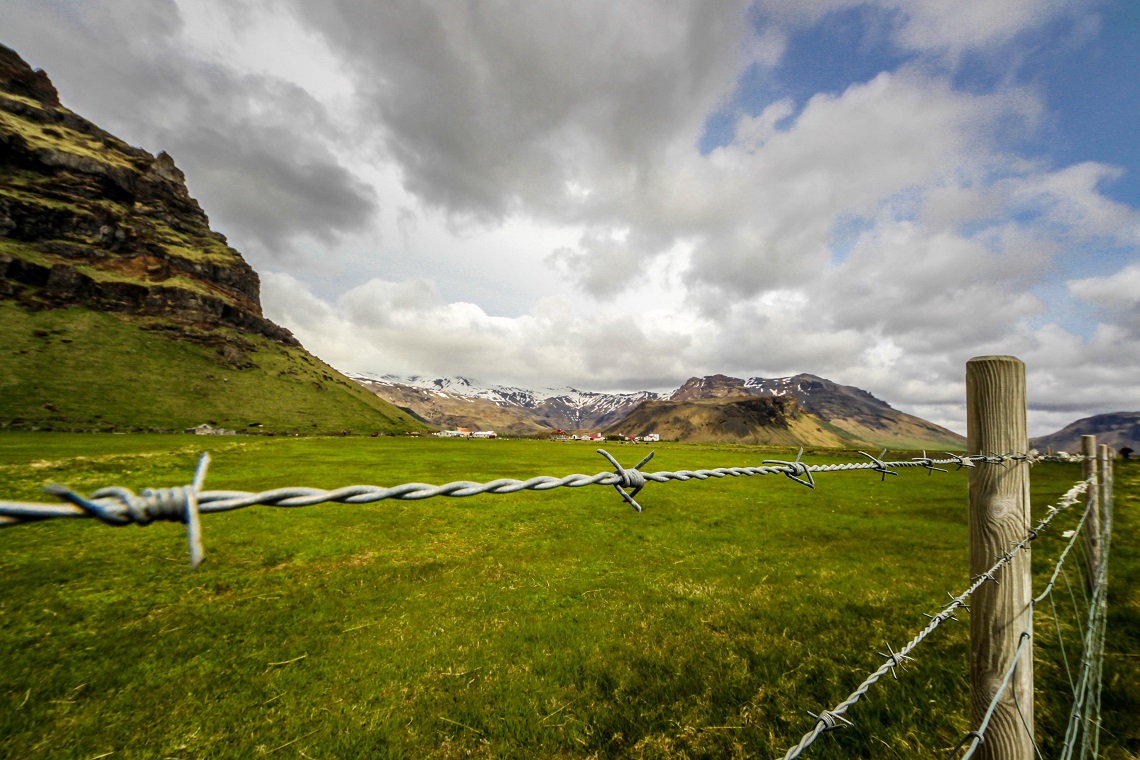
The Skaftafell Terminal, the central meeting point for guide services, has a small cafeteria with a limited menu and is open only in the summer months. The nearest market is 40 miles west of Skaftafell, in the town of Kirkjubæjarklaustur, so it’s best to buy everything you’ll need before arriving. Most hotels we researched have community kitchens to store and prepare meals, but check with the establishment when booking.
It goes without saying that glacial travel exposes one to bitterly cold conditions. Dress appropriately and in layers, including waterproof, breathable jacket and pants, so as to prevent a dismal day on the ice. A first-rate pair of gloves is an indispensable piece of kit, to prevent what ice climbers call the ‘screaming barfies’. Also called the hot aches, the screaming barfies is a condition that results from the rapid rewarming of the hands after they become numb due to prolonged exposure to freezing conditions.
The pain can be so intense, as Canadian ice climber Will Gadd put it, that you want to scream, then barf, then scream some more.
ICE, ICE, BABY
The trek to meet the glacier began far below the ice field where detritus and talus, spit from glacial retreat, made for a tenuous approach. It wasn’t long before we found ourselves at the junction of rock and ice. Before us lay an ice field wrought with the dangers to be expected in crossing a glacier. Our primary concern was falling into a deep crevasse, never to be seen again. To mitigate this hazard, we roped up in the customary fashion and kept a tight grip on our ice axes, to arrest a fall should one occur. It was at this point the real adventure began.
With crampons underfoot, we advanced cautiously but purposefully towards the steeper ice. Speed is security when crossing an ice field; the glacier is in perpetual motion and what is safe one minute could become treacherous the next. Occasionally our guide would un-rope and recce ahead, ensuring the way was clear from danger. During one such break in our progress, we watched as a baleful storm front moved in, adding an ominous mood to the undertaking to come. With the clouds came freezing rainfall mixed with ice. The excitement between us was palpable. If retreat were an option, we wouldn’t have considered it.
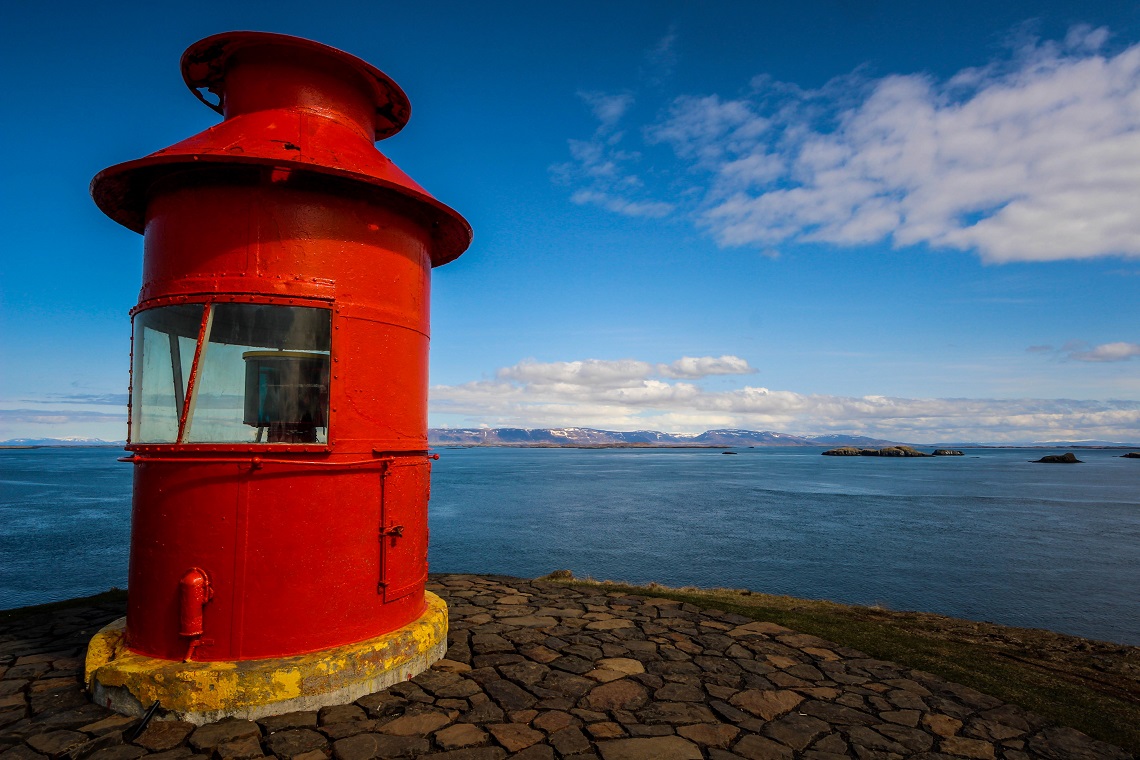
Eventually, we came to a 15m tower of dusky ice where we were to prove ourselves before moving on to the more difficult climbing that lay ahead. Our guide’s presence held the space of authority as he gave a safety briefing before deftly ascending the ice wall to establish a top rope anchor. We took turns on the rope alternating between climber and belay.
After several rounds on the modest section of ice, our skilful guide was satisfied we had proper technique, and having made the grade we were cleared to proceed to higher ground. We advanced ahead on course before halting at the edge of a deep crevasse where we were to have a go at advanced glacier rescue skills. An anchor was established at the lip, and once tethered, we were lowered into the cavernous opening. The sensation of being deep within the glacier was both exhilarating and frightening as the walls of the crevasse seemed to close in. The bite of the ice tools and crampons was true and held my weight as I ascended towards the opening above.
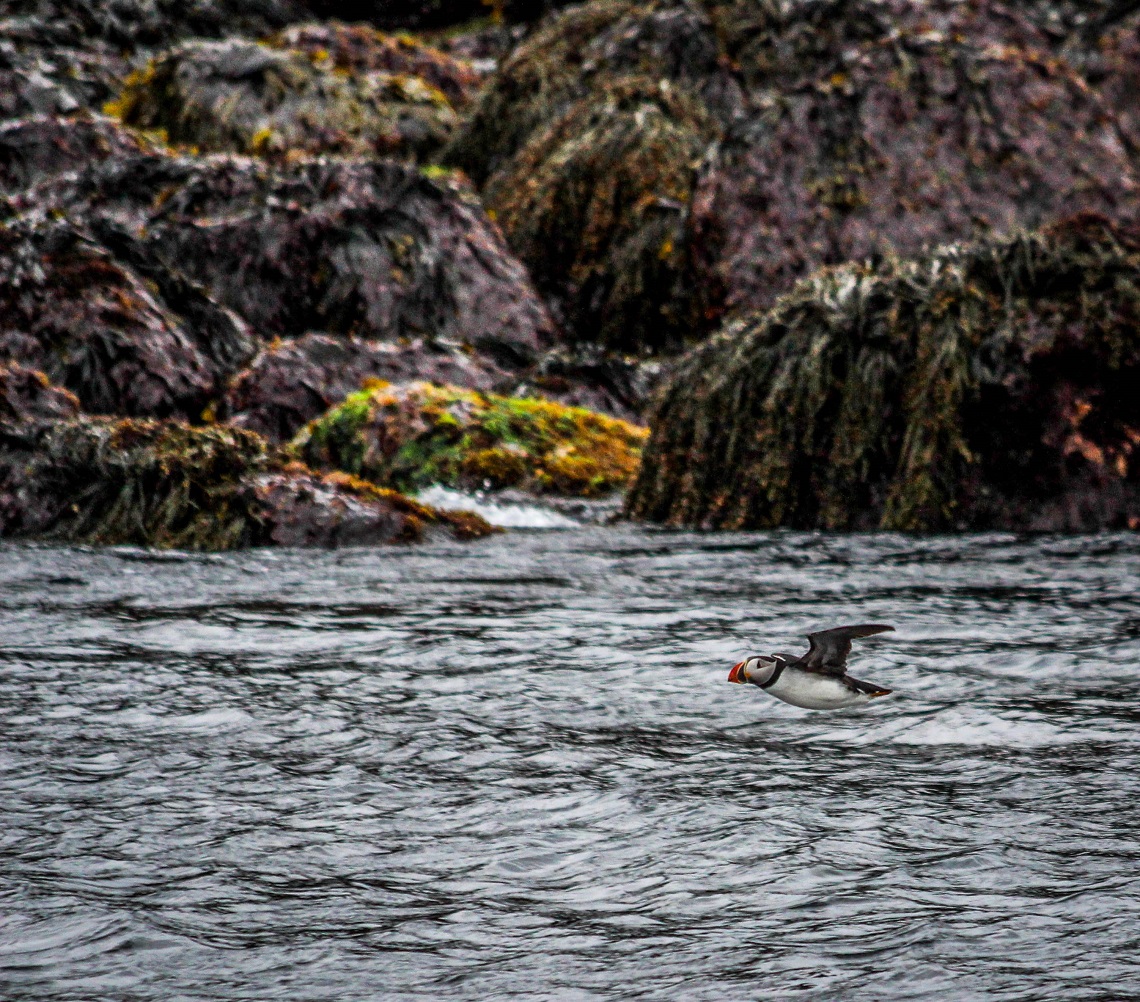
Upon emerging from the icy chasm, I couldn’t wait to give it another go, but in the spirit of fairness, I surrendered the axes to my wife, Lyndsay. I could see by her look of eager anticipation that had I not, they’d have been taken by force. While on belay, I watched as she moved towards the opening with skill and poise, as if she had been born for this moment. If the freezing rain and miserable conditions were affecting her spirit, there were no visible signs on that resplendent smile I adore.
Our final mission on the ice was a relatively low angle climb towards a destination that seemed to disappear into the low laying cloud cover above. Led by our adept guide, we followed his route to the high point of our day. From the vantage point on the precipice of the glacier, towering above the valley below, I could imagine how the vast landscape must have looked just twenty years ago, before the acceleration of glacial retreat has led to its present state.
THE CHILLING TRUTH
Glaciers form over the ages as snow is slowly compressed and the aggregate accumulation during the winter months exceeds the summer melting. This compression of snow eventually leads to its turning into glacial ice. The planet’s glaciers help to maintain homeostasis of our climate and store vast amounts of water in the process. Emissions of greenhouse gasses, such as carbon dioxide and methane dating back to the industrial revolution have led to the undeniable truth that the earth’s climate is changing. As a result, summer glacial melting is outpacing winter accumulation.
According to researchers at NASA, the years 2016 and 2020 are tied as the warmest in recorded human history. Vatnajökull’s outlet glaciers have reportedly lost from 15 to as much as 50 percent of their total ice volume in the past 20 years, among the highest recorded mass loss worldwide.
Experts suggest that if this pace continues Vatnajökull glacier may be depleted in the next 150 years. The consequences of glacial retreat are numerous. Glacial ice radiates sunlight and heat back out to space, helping to keep our planet relatively cool and stabilising weather patterns. As mass loss continues, the process is causing the planet to heat up even faster.
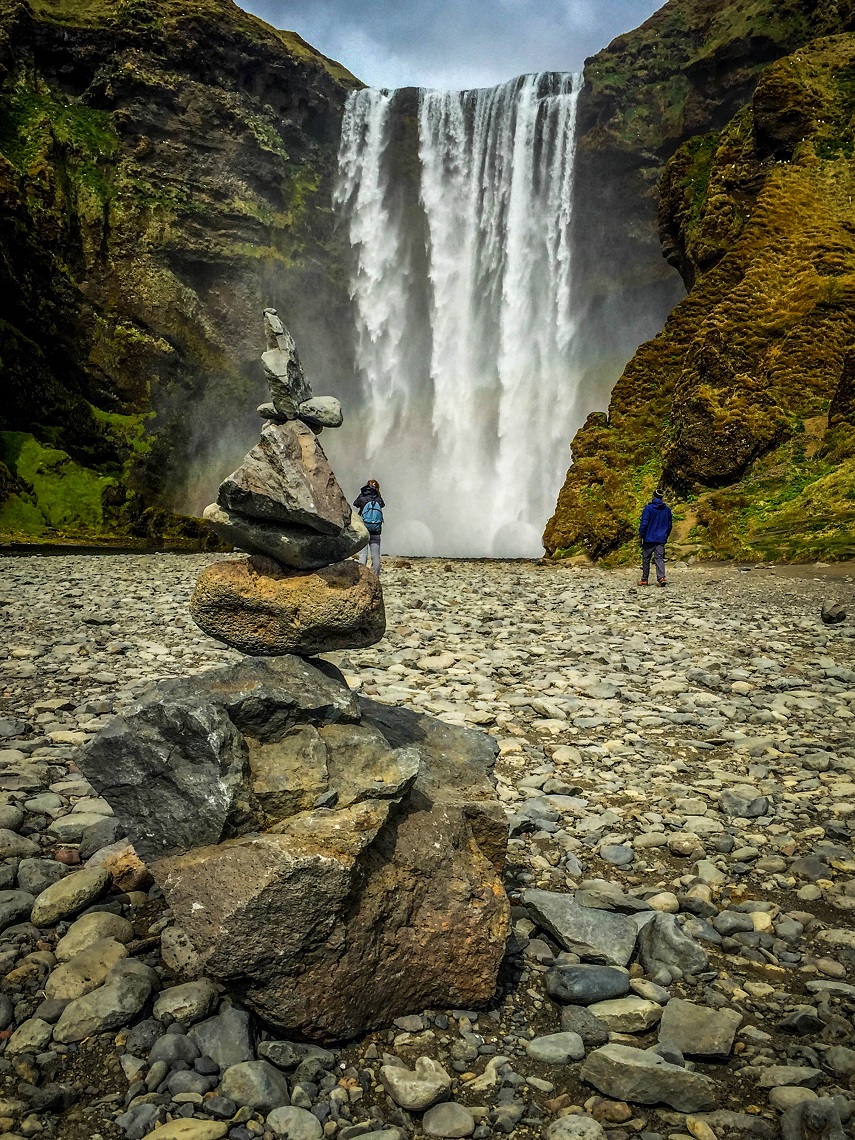
The loss of glacial ice is also leading to a significant rise in sea levels. Should this continue to go unchecked it could lead to displacement of large portions of the human population and the extinction of many of our planet’s animals. Researchers suggest that it is not too late, but it will take a concerted effort across the globe to lower emissions of greenhouse gasses. If everyone does their part to decrease carbon output, we can make a difference.
Our day on the ice came to a close sooner than we had hoped, but our cups overflowed from the adrenaline-driven experience. Once back at the Skaftafell Terminal we devoured delicious lamb stew purchased at the small cafeteria and cold ales we had brought to celebrate the end of an adventurous day. Eventually, we made our way to Fjallsárlón Iceberg Lagoon, and the sights there, amazing as they were, could not compare to the experiences we’d had the previous day on the glacier.
The ephemeral nature of seasonal ice implies that it will be gone with the steady marching north of the sun on the setting horizon. The beauty of glacial ice is in that it endures seasonal change, but the future is uncertain. Get after it before it is too late, because as Mr. Kerouac so aptly put it, “In the end, you won’t remember the time you spent in the office or mowing the lawn. Climb that damn mountain.”
WHO’S WRITING?
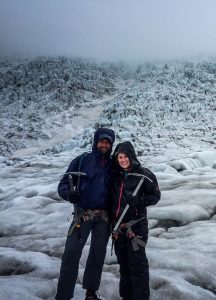 Michael was raised in Arizona, where he grew up exploring the Southwestern United States, Mexico, and Central America with his family. These experiences infused in him a passion for travel and adventure that’s endured throughout his life. He and his wife, Lyndsay, both enjoy travelling and exploring other cultures and customs. With a new addition to their family, they look forward to instilling in him their love of adventure.
Michael was raised in Arizona, where he grew up exploring the Southwestern United States, Mexico, and Central America with his family. These experiences infused in him a passion for travel and adventure that’s endured throughout his life. He and his wife, Lyndsay, both enjoy travelling and exploring other cultures and customs. With a new addition to their family, they look forward to instilling in him their love of adventure.



